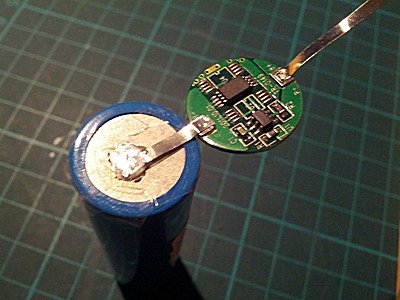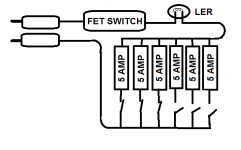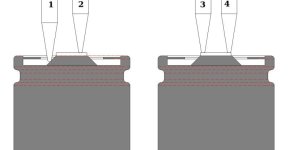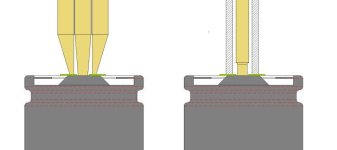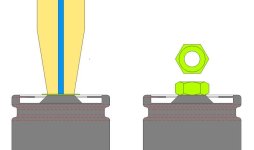I just found this awesome portable 18650-cell based portable soldering iron. I don't necessarily need a portable soldering iron, but I found it while researching resistance soldering. This design might be able to have a minor modification to perform well as a Resistance Soldering Unit (RSU).
https://www.youtube.com/watch?v=eYBXO418irc

I don't care if an RSU is powered by a wall socket or is portable (although both would be nice), I just want to find out how to make a simple and reliable RSU that is affordable. There is nothing wrong with my 120-VAC $20 100W soldering iron, it works well. I am interested in attaching thick copper bus-ribbon to 18650 cells that can produce 30A each, and conventional soldering would require a long enough contact time that it would damege the cell electrolyte. Spot-welding thick copper is almost impossible without a machine that is $10K.
It looks like an RSU using 3V and 40A will work well, and this can be made fairly cheaply. The result should be simple, robust, and reliable.
https://www.youtube.com/watch?v=eYBXO418irc
I don't care if an RSU is powered by a wall socket or is portable (although both would be nice), I just want to find out how to make a simple and reliable RSU that is affordable. There is nothing wrong with my 120-VAC $20 100W soldering iron, it works well. I am interested in attaching thick copper bus-ribbon to 18650 cells that can produce 30A each, and conventional soldering would require a long enough contact time that it would damege the cell electrolyte. Spot-welding thick copper is almost impossible without a machine that is $10K.
It looks like an RSU using 3V and 40A will work well, and this can be made fairly cheaply. The result should be simple, robust, and reliable.


